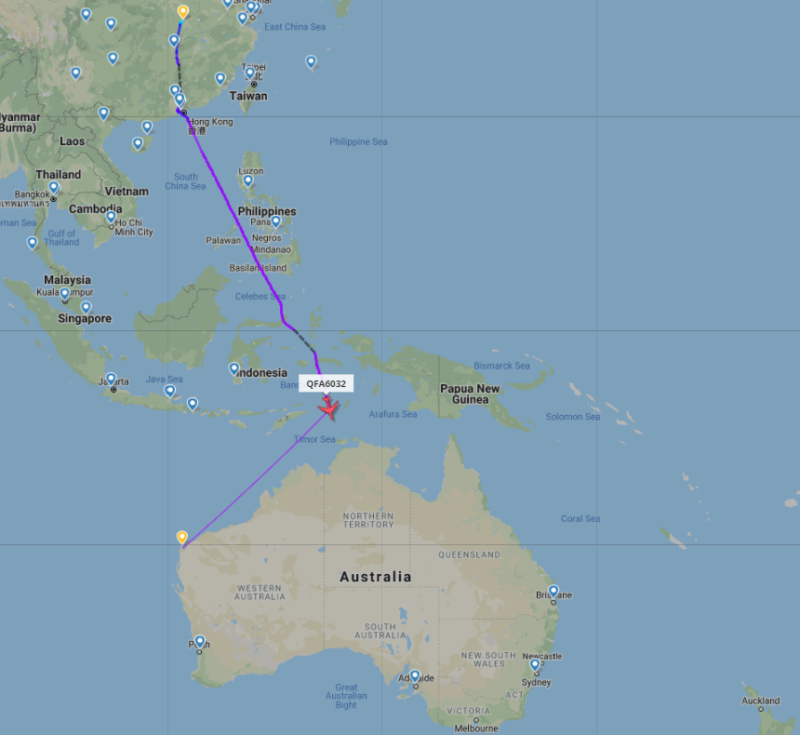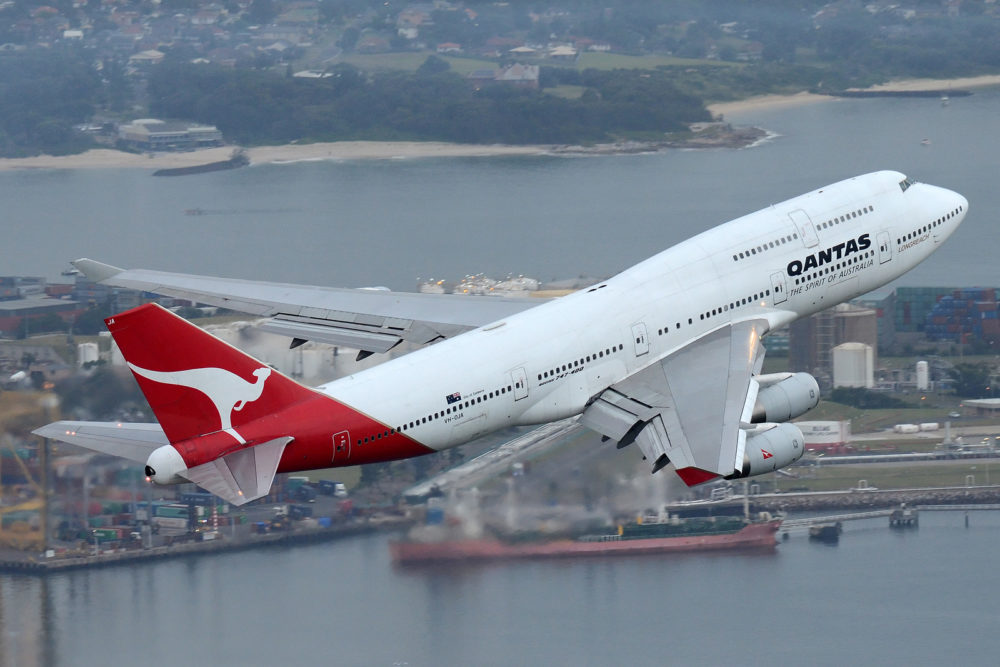To rescue Australian citizens from the Coronavirus epicentre in Wuhan, Qantas has been tasked with operating a flight to the city from Sydney via Hong Kong using a Boeing 747-400ER.
With various rescue flights taking place all over the world, I’ve wondered what safety procedures are implemented to ensure the well being of passengers, crew and those travelling on the aircraft in the future as part of regular service.
To answer this question, I contacted Qantas for details and they responded with the following details:
The Flight
QF6031 departed Sydney Kingsford Smith Airport on the 2nd of February at 02:13 UTC and arrived at Hong Kong International Airport eight hours and 24 minutes later at 10:37 UTC. The aircraft then departed Hong Kong at 15:27 UTC and arrived at Wuhan at 16:58 UTC.
QF6032 is operating the return flight to Australia, and departed Wuhan with a five hour delay at 23:45 UTC. As of 16:29 AEDT, the aircraft is en route to Learmonth Airport where passengers will disembark to get on another flight.

Qantas didn’t say what would happen once the aircraft arrived in Australia and although information is limited, sources suggest passengers will either board two Skytraders Airbus A320s or the Royal Australian Air Force will complete the journey to Christmas Island with one of their aircraft. Passengers will then have to stay on the island for two weeks before being cleared to return to mainland Australia.
Cabin Crew, Pilots and Health Officials
On board QF6031/32 is a team of 14 Qantas cabin crew and four pilots that volunteered to perform the flight. What was thought to be a limited appeal operation turned out to be a case of more hands up than positions available.
“The internal call for volunteers to operate the flight within Qantas was oversubscribed, with scores of people putting their hand up to assist.”
Qantas Spokesperson
Also on the flight were various health officials in charge of monitoring passenger and crew health and providing assistance to anyone in need.
Safety Protocols
Due to the nature of the flight, Qantas had to follow a list of safety protocols formed by government health authorities, boarder protection and their own safety teams.
Prior to boarding each passenger underwent a screening process, which generally involves filling out a questionnaire and a temperature recording.
To prevent the potential spread of the virus on the flight, all passengers and crew had to wear surgical masks and were given instructions on how to safely change and dispose of them every hour to make way for clean replacements. Bottles of hand sanitiser were also handed out to everyone on board, for individual use during and after the flight.
Photos from SriLankan Airlines and Kalitta Air flights show crew members wearing protective suits, goggles and surgical masks:
Whilst there were 14 cabin crew on board the flight their main priority was cabin safety, as required by law. Attending passenger needs was primarily left to the health officials, who have been trained to work in these situations. As a result of this safety guideline, food and beverage services were limited on the flight.
Further limiting unnecessary interaction with passengers, the upper deck of the Boeing 747-400ER was reserved for Qantas crew members as a safe space for the duration of the flight.
Aircraft Sterilisation
Upon the completion of the flight, Qantas says the aircraft will be thoroughly cleaned before re-entering regular passenger service. Although specifics weren’t provided, this would likely include the disinfecting of cabin surfaces, seating and bathrooms.
All waste collected on board the rescue flight from Wuhan will be disposed of in accordance with health and quarantine regulations.
“All Qantas aircraft contain medical-grade HEPA filters as part of the air conditioning system, which significantly reduce the risk of virus spread.”
Qantas Spokesperson
The use of medical-grade HEPA filters in the air conditioning system, which are used by all airlines, means Qantas can curb the spread of the virus in airborne form and, if necessary, replace the filters before re-entry into service.
Finances
Qantas said they have worked closely with the Australian Government, including the Department of Foreign Affairs and Trade, on the complicated logistics of the flight. Since it will be operated at a loss, the government is covering the majority cost of the charter.
For more details on other evacuation flights around the world, see our main article covering the topic:




